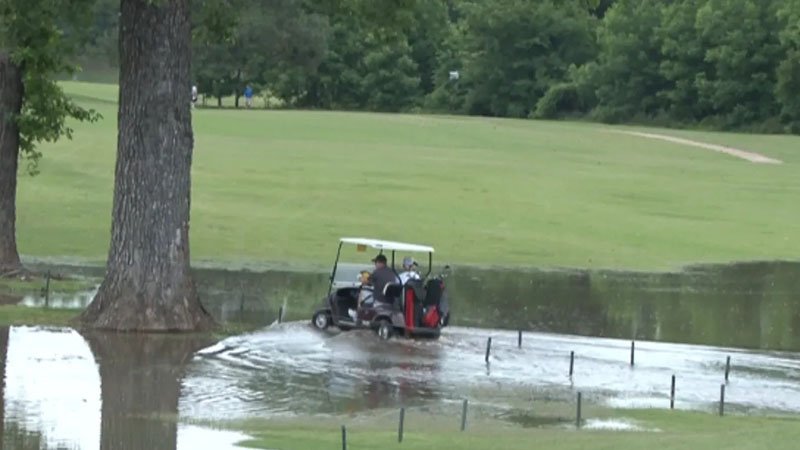
Golf course superintendents growing warm-season grass and those who manage cool-season turf do not typically have much in common. This year, however, many of them have at least one thing in common - their golf courses are very wet, and in many cases have been completely under water.
It is 2020, after all.
From Iowa to Michigan to Florida and just about everywhere in between, golf courses have been inundated with spring rains, and social media is packed with photos and videos of golf courses under water.
The worst of it appeared to be in Midland, Michigan, where the Currie Golf Courses, a 27-hole municipal operation that also includes a par-3 layout, were flooded by the Tittabawassee River when two dams, one each on Wixom and Sanford lakes, failed on May 18 and sent water rushing downstream leaving both lakes drained.
Midland is the global operations hub for Dow Chemical, and 10,000 of its residents were ordered to evacuate.
Before the disaster, rainfall in central Michigan in May was double the monthly average by May 27, prompting Michigan State's Kevin Frank, Ph.D., to publish a primer on the Michigan State Turf Extension website on water damage ranging from just a few inches to several feet.
Just how bad turf damage is after a flood depends on temperature, silt and mud in the water and turf type.
When temperatures are in the 50s and 60s, like they have been throughout much of the eastern U.S. until the last week or so, cool-season turf often is better equipped to be submerged for a period of time.
"At this time of year, except now that it has been smoking hot the last couple days, you can see (water) on there a week and no damage with submersion," Frank said. "The problem is siltation. Creeks and rivers carry a tremendous amount of soil.
"On soccer, football and baseball fields, I see people go in with a Koro and skim that off the surface. I've also seen places where water was there a week and there was no soil along with it and it's just a matter of letting it dry out. I've also seen where it floods, and, like today, if it happens to be 90 degrees, the turf doesn't last nearly as long, and it gets so bad so fast you can't stand the smell of it."
Turfgrass species differ in their ability to survive flooding. Unfortunately, there are no hard fast numbers such as Kentucky bluegrass will survive five days and creeping bentgrass 15 days under water.
Some cool-season grasses are more susceptible to damage than others.
Frank wrote that submersion-tolerance ratings were excellent for bentgrass, medium for Kentucky bluegrass and merely fair for annual bluegrass and perennial ryegrass.
"Turfgrass species differ in their ability to survive flooding," Frank wrote. "Unfortunately, there are no hard fast numbers such as Kentucky bluegrass will survive five days and creeping bentgrass 15 days under water."
As temperatures rise, the amount of time the turf spends submerged is directly related to damage.
"Flooding may cause the turf to turn yellow or brown," Frank wrote. "The discoloration is related to the turf losing its ability to take up nutrients. It doesn't take long once turf is submerged for soil oxygen levels to decline and root hairs to begin to die. As the root system becomes impaired, nutrient extraction and water uptake will be limited. Keep this in mind once the water has receded as the turf may benefit from a light fertilizer application."
Thinning areas might require reseeding with perennial ryegrass, or regrassing entirely.
If floodwaters bring silt, and they often do, it is important to get the sediment off the turf as quickly as possible. That can mean moving it off with a hose or, if it has dried out, breaking it up first with an aerifier and then removing it.
Frank wrote there is an easy do-it-yourself method for determining damage level, if there is any at all, in the turf.
To assess if submersion has caused injury, Michigan State University Extension advises extracting several plants from the flooded site and cutting a horizontal cross section through the crown. If the crown is white and firm, it has survived. If the crown is brown and mushy, it's dead.


